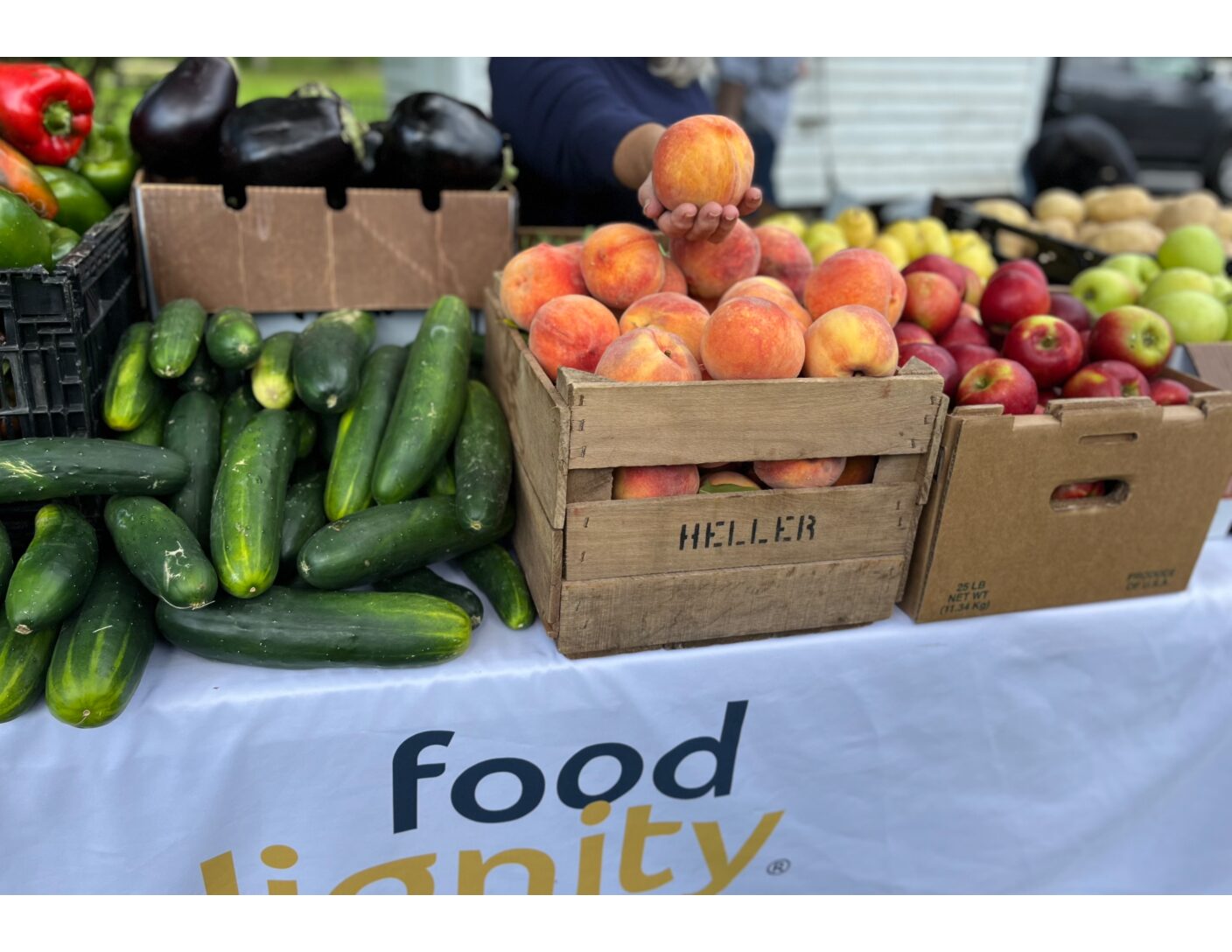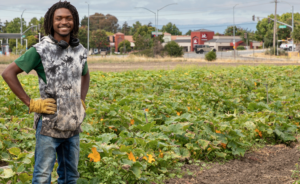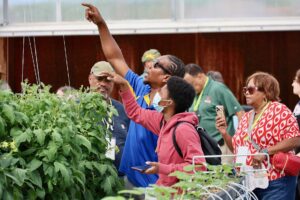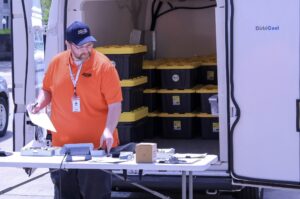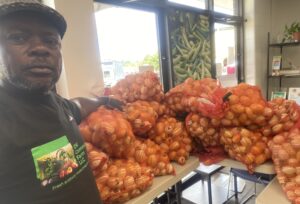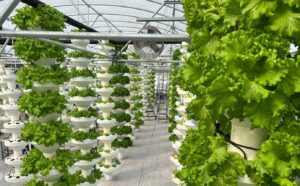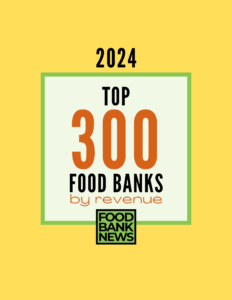Farm-to-food-assistance programs are thriving, according to a report, signaling a new chapter in how communities can address hunger relief.
The idea of getting food from local farms to food-insecure people is not necessarily new, but Covid-19 helped to spur additional investment in the practice. Now that the model is taking hold, a wide diversity of farm-to-food-assistance models are emerging, leading to a multitude of benefits.
“Farm-to-food assistance is much more than just buying food from local farmers and giving it away. It’s so much more than that,” said Susan Lightfoot Schempf, Co-Director of the Wallace Center at Winrock International, which recently released this report on the practice.
Such programs pay farmers fair prices to produce healthy food to be distributed through food assistance organizations to the food-insecure. They spur new relationships between farmers and food assistance groups, contributing to the resiliency of local food systems and the economic well-being of farmers, while ensuring more equitable access to food. The programs are taking on a variety of forms.
Many of them are meaningful in size, with 37% of them serving at least 5,000 people a month, according to the report, which surveyed 316 entities, with the majority of responses (36%) coming from food banks, pantries and related outlets. About half of the programs purchase from 15 or fewer farmers, underscoring the central role of relationship-building, while only about 8% purchase from more than 100 farmers.

The programs get their funding from a number of sources. Despite the advent of federal grants through the Biden Administration’s Local Food Purchasing Assistance (LFPA) program, less than half of surveyed organizations (43%) listed federal funding as one of their top two funding sources. An equal amount (43%) cited philanthropy as a top funder, while 34% cited state governments.
At Metro Caring in Denver, Colo., which runs a large grocery-store style pantry, LFPA grants have helped it allocate $300,000 in fiscal 2024 to purchase food, with 96% of that budget going to about 15 local and women-owned farms and ranches, said Emily Settlecowski, Manager of Strategic Initiatives. That spending power makes it possible for small farmers to have the certainty that their goods will find a market. “That’s really what these producer agreements are about,” Settlecowski said.
In Pennsylvania, the Food Dignity Movement used $500,000 of funding from the Biden Administration’s American Rescue Plan Act to help build an ecosystem of farm stands in high-need outposts that invite people to “take what you need and pay what you can,” said Founder Clancy Harrison. Food Dignity guarantees that farmers will be 100% paid in advance for the items they bring.
An important aspect of Food Dignity is that food is distributed with the help of trusted nonprofits that are not necessarily food pantries, getting around often limited pantry hours. Community members, who might be residents of an elderly high-rise or members of a local VFW for example, are invited to anonymously put money in an envelope, but are not required to. Between individual contributions and sponsorships from local businesses, Food Dignity just about breaks even on its farm stands. So far, it’s helping about 43 farmers distribute food with the help of about 30 nonprofits.
In Harrison’s view, farm-to-food-assistance offers the opportunity to track new, more meaningful outcomes than simply the number of pounds of food distributed. Harrison relishes the fact, for example, that one farm in her network, which was set to shut down, was able to stay open, while another that normally operated for only half the year now stays open year round.
“Let’s stop equating people to a number,” like pounds or meals, Harrison said. “Does this investment improve the sustainability of the farmer? How does it improve the outcomes of the nonprofit? How does it improve the health of the individual consuming it?”
At King’s College in Wilkes-Barre, Pa. – which is self-insured, meaning it takes on the cost of its own benefit claims – distributions by Food Dignity are viewed as having value far beyond providing food. The college is working to secure its own sponsorships and grants to cover the costs of the monthly distributions because it views them as part of a worksite wellness program that improves employee morale and loyalty, while decreasing absenteeism. “It’s switching the mindset,” Harrison said. “We’re investing in the health of our population.”

In Tacoma, Wa., Eloise’s Cooking Pot Food Bank is working with 27 BIPOC farmers on a number of initiatives. A building it is renovating on the same block as the food bank will eventually house a permanent farmers market, open to all in the community, as well as a business center aimed at helping the farmers become economically self-sufficient. The top floor will host an educational program that will pay 16- to 25-year-old youths to learn the business of growing their own microgreens and herbs.
The food bank learned from working with its farmers that the vast majority of them were not profitable, said Ahndrea Blue, President and CEO. A five-week business program for farmers, which will run during the winter off-season, will focus on accounting and related issues specific to farming. “Our biggest problem working with farmers is that they didn’t have the time, nor the expertise, to even properly bill,” Blue said. “We said, ‘We can’t be in business with you if you’re not profitable because that gives us all the power. We want you to have a long term business strategy.’”
Over time, the business program should help the farmers optimize the high-quality produce they are growing. “Their product is so good, they don’t even have competition,” Blue said. “They just don’t know how to get to market. They don’t know the value of it.”
Harrison, recognizing that farm to food assistance is happening all over the nation, sees potential in joining forces to show that the work can be done at scale. To that end, she is forming the PLANT Coalition, which stands for Promoting Local Agriculture and Nutrition Together. “The whole purpose of the PLANT Coalition is to unite our voices,” she said.
Harrison’s big goal goes well beyond addressing food insecurity. She envisions a healthier population able to enjoy the output of small farms. “We’re not doing this to fight hunger,” she said. “We’re doing this because, selfishly, in 100 years I want my grandkids and my great grandkids to have access to small farmers.” – Chris Costanzo
Like what you’re reading?
Support Food Bank News
